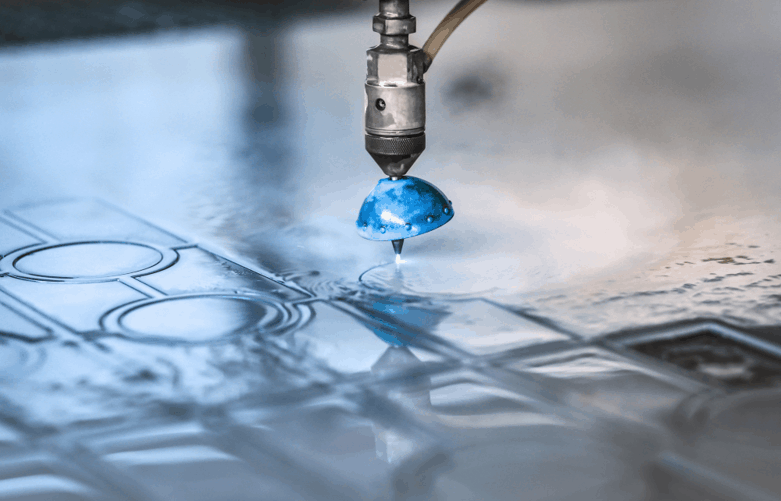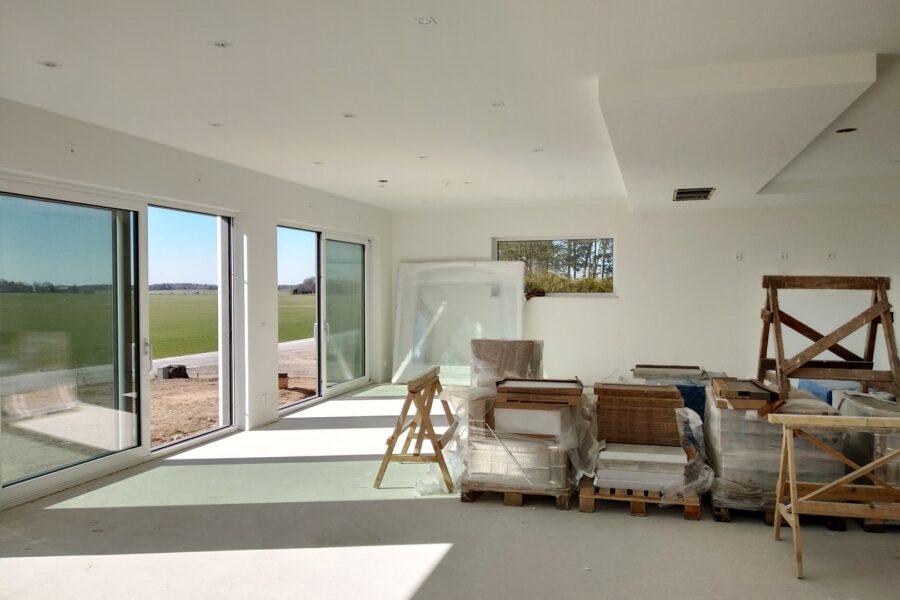The difference between shoddy and first-rate construction often comes down to just a few millimeters. In the construction industry, the accuracy and precision of materials are crucial. If there’s a slight error in the dimensions of the materials, you might weaken the structural integrity of the property.
You’re not setting up a Jenga tower where the blocks have “necessary imperfections.” Whether building a home, bridge, or skyscraper, the steel beams and concrete slabs need to be cut to their exact specifications.
This is where water jet cutting services enter the picture. It’s an environment-friendly and versatile cutting method for any architectural project. Not to mention that it’s also one of the most precise cutting technologies that can handle almost any type of material.
Here are nine ways that water jet cutting can benefit the construction industry.
1. Accuracy That’s Second to None
The water jet cutter is one of the most accurate machines that you can have in your arsenal. This is one of the reasons why jet cutting is increasing in popularity over other cutting systems. It’s used not only in construction but also in other industries that require a high tolerance.
Some top performance equipment can achieve a parts tolerance of 0.001 inches (0.025 millimeters). However, do note that cutting a thicker material can drop the accuracy. Also, the tolerances can vary by brand because of differences in the control system and manufacturing.
2. Can Cut Any Material
Whatever you can think of, the water jet can probably cut it. The combination of water, high pressure that can reach up to 90,000 psi, and abrasives can cut through almost any material.
Here are some examples:
- tungsten
- Hastelloy
- stainless steel
- titanium
- brass
- granite
- aluminum
- carbon fiber
- marble
- limestone
- fiber-glass
- Kevlar
3. Can Cut Any Shape or Thickness (With Caveat)
For projects that demand complex fabrications, water jet cutting is the solution. Beveled edges, smooth curves, and sharp corners are all possible with jet cutting.
Also, while the jet cutter is very proficient at making 2D cuts, it’s capable of producing 3D cuts if performed by an experienced technician.
A common misconception about water jets is that they can’t cut through thick sections. Almost any thickness of common materials can be cut, but the process becomes significantly slower. For practical purposes, about two to three inches of solid steel is the upper limit of abrasive jet cutting.
4. No Heat Affected Zone (HAZ)
Laser, flame, and plasma cutting can, without a doubt, deliver great results. However, a significant drawback of these methods is the high temperature generated during cutting. Thermal stress can change the physical properties of some areas of the material.
These areas are called heat-affected zones. The material may exhibit hardening, warping, brittleness, and lessened resistance to corrosion.
The water jet employs a cold cutting method to slice through the material. It can cut through heat-sensitive materials without the risk of undesirable results. This also means that the water jet is safe to use in environments where there’s a danger for an explosion, such as in the oil and gas industry.
5. Leaves a Clean Cut
One of the qualities that set water jet cutting above the competition is superior edge quality. Because it uses erosion instead of shearing or heat, the result is an exceptionally smooth, uniform, and burr-free edge.
Abrasive jet cutting is the method of choice for projects that emphasize aesthetics and performance.
6. Efficient
The water jet system is capable of fast, accurate cuts. This allows you to get more work done in a day than you would with conventional methods.
The high quality of the cuts is the major reason for the efficiency of jet cutting. The resulting cut is so clean and precise that there’s usually no need for additional edge treatment. Because you skipped the finishing process, you’ll save time and money.
7. Quick to Set up and Easy to Use
Water jet equipment usually comes with easy-to-use software making it easy to integrate into any type of job. It’s quick to unload and set-up because of the absence of complex fixturing.
You’ll also save a lot of time because there’s no need to change tools whenever you change the type of material. All materials use the same cutting head and you just need to adjust the feed rate.
It’s also easy to handle because the process only involves low reaction forces. The low reaction forces even allow robotics to be used making it almost effortless to operate.
8. Water Jet Cutting Services Are Environment-Friendly
The precision of the technique minimizes kerf or the width of the material removed by a cutting method. Therefore, the area of useful material is maximized. This reduces the amount of scrap and wasted material produced during cutting.
As a cold cutting process, little to no hazardous waste is released to the environment. Very low levels of dust are generated because the water carries away the kerf particles. The garnet abrasive is non-toxic and both the water and the abrasive are recycled in this closed-loop system.
If you’re looking for a greener solution, especially with stricter environmental laws today, water jet cutting is the answer.
9. Other Applications in Construction
The abrasive water jet has an almost unlimited number of applications. But for construction, in particular, it’s not confined to cutting the necessary materials. There are several functions in which the water jet can provide excellent results.
For example, it can be used to remove lead-based paint from bridges. In contrast to the traditional method of sand-blasting, using a water jet is a more eco-friendly method that doesn’t damage the base metal.
It has also been used in the removal of damaged concrete from city structures. With a jackhammer, you might wreck the reinforcement bars or the healthy concrete underneath. This can all be avoided if you use a water jet.
Water Jet Cutting Can Meet Your Architectural Standards
If you have the vision to create the perfect house or building, water jet cutting services is the support you need. It offers precision, versatility, and efficiency to help you in even the most complex architectural endeavor.
For more topics about the cutting-edge technologies used in construction, keep browsing our site.
Discover more from Futurist Architecture
Subscribe to get the latest posts sent to your email.




Thank you for pointing out that water jet cutting is a very precise way to cut metal. I want to start a business that will require a lot of precisely cut metal parts, so I’m thinking about hiring someone to make them for me using water jet cutting. I’m going to look for a good provider of water jet cutting services that I can use.